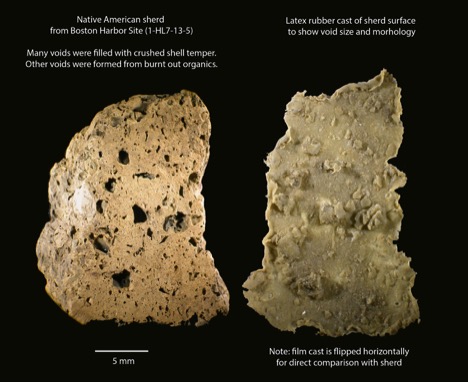Some Native American ceramics of the Woodland Period were made by adding to the local clays a temper of crushed shell. During burial this temper can be dissolved out of the clay by acidic soil water leaving the potsherds riddled with small holes or voids. Besides shell other materials can leave voids in fired ceramics including chopped plant stems which could be deliberately added or small plant seeds which may inadvertently find their way into the mix. During firing these organics are usually burned out and also leave distinctive void surfaces.
In the lab we study the size and morphology of these voids to identify the lost original components of the clay body. One method we are developing is to make latex rubber molds of the sherd surface with special attention paid to capturing the void surfaces.

